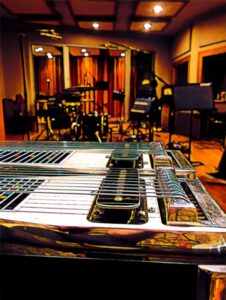As an Amazon Associate Playpedalsteel.com earns from qualifying purchases. This page contains affiliate links.
The pedal steel guitar is often known for its complexity of sound, yet it maintains an heir of mystery about how the instrument itself actually works. There are a lot of different parts that physically make up the pedal steel guitar, and how they work together is what makes the instrument unique in the way it functions.
Most pedal steel guitars consist primarily of the following parts (click to jump to section):
There are also some smaller parts that help with the overall functioning of the pedal steel guitar. Since many brands of pedal steel guitars are no longer being manufactured, finding replacement parts for your pedal steel can be a little more challenging than some other instruments.
Let’s take a more detailed look at some of these parts, and how they function together…
The Body of the Pedal Steel
A large portion of the pedal steel is made up of its body, which is often called the cabinet of the guitar. It is the main rectangular structure of the pedal steel that the neck(s) is on top of, and underneath it is the undercarriage of the pedal steel.
Most bodies of pedal steel guitars are either stained or colored to give the instrument a large part of its aesthetic design. Usually on the front of the body there is a logo for the brand of the pedal steel, or some other aesthetic design for people to see as the instrument is being played.
The body of a pedal steel will usually house one or two necks, with different tunings. Sometimes a pedal steel’s body will have a pad built into it for a player to rest their arms on as they play.
A Pedal Steel’s Neck
The neck of the pedal steel guitar rests on top of the body of the guitar. Usually the neck is slightly raised off of the body of the steel.
On top of the pedal steel’s neck(s) is the fretboard, which helps players visually locate pitches as they play. The neck usually extends most of the length of the pedal steel’s body, with the headstock being on one end of the guitar, and the changer on the other.
The Headstock
A pedal steel’s headstock is where the strings meet the tuning keys, and is the main unit that the tuning keys are attached to. Most headstocks have 10 tuning keys (or a tuning key for every string that is on the pedal steel).
The headstock usually is the shape of an elongated trapezoid, and most are similar in design and aesthetic. At the end of some headstock designs, there is a slight protrusion to give the headstock a slightly different look.
Tuning Keys
The tuning keys are the part of the pedal steel guitar that mechanically raise and lower the pitch of the strings in a fixed manner. Each string has its own tuning key, so for instance, a 12-string neck of a pedal steel will have 12 tuning keys on its headstock.
Many pedal steel guitars use Grover tuning keys, however there are other manufacturers of tuning keys that are used. The knobs of the tuning keys are located on the outer part of the headstock, and point upward so that a player can tune them more easily with their hand.
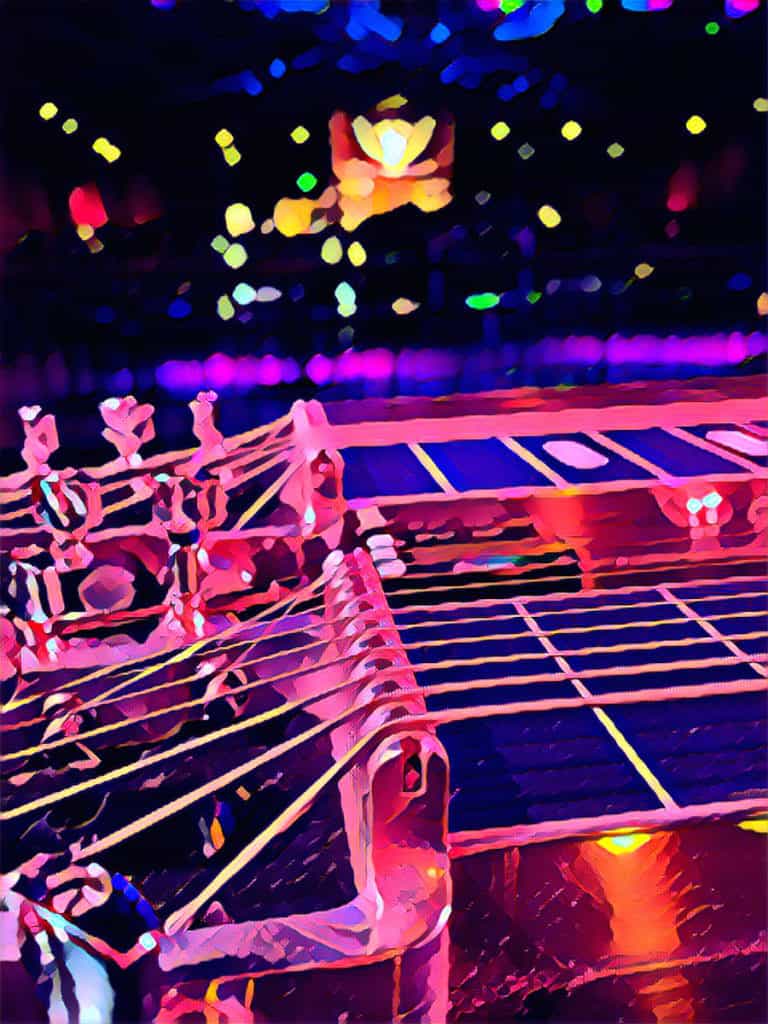
Rotating the tuning key clockwise usually tightens the string, and rotating it counter-clockwise usually loosens it. A tuning key usually has a screw in it that can be used to assemble and disassemble the tuning key.
Roller Nut
Like a regular six-string guitar, a pedal steel has a nut type of mechanism that the strings rest on before they meet the tuning pegs of the tuning keys. However, because the strings on a pedal steel are sometimes raised or lowered mechanically with its foot pedals and knee levers, the nut on a pedal steel must mechanically rotate or roll so that the strings can move freely along the nut without catching and breaking.
Most roller nuts consists of a long cylindrical piece of metal that runs through the rollers of the pedal steel. There is a roller (shaped and acting like a wheel or pulley) for each string.
Each string runs over the top of its roller to head towards where it meets the tuning pegs, and the roller will roll with the movement of the string when its pitch is mechanically raised or lowered. The roller nut is located to the left of the first fret of the pedal steel, when looking at it from a playing position.
Pedal Steel Fretboards
On top of the neck of the pedal steel guitar rests its fretboard, which has lines denoting where each pitch is. These are visual markers that help a player calibrate their bar with the pitches of notes so that they may play more in tune and hit the correct notes that they’re seeking.
Most fretboards have some form of symbols at the 3rd, 5th, 7th, 9th, and 12th frets, which continue along the fretboard up until the 24th fret. For instance, the Emmons brand pedal steels have atomic particle symbols at these positions on the fretboard.
Pedal steels with more than one neck and tuning will have a separate fretboard for each neck. Usually, the bar is placed directly on top of the fret lines to produce notes that are in tune with the music.
Pickups
To amplify the instrument, pedal steels require pickups that are located near the changer area of the guitar. Usually, a player picks notes with their right hand around the pickup area.
Pedal steel pickups usually have a higher (or “hotter”) output than regular guitar pickups. Many players prefer the sound of single-coil pickups for pedal steel guitar, which can have a bright and twangy tone for certain styles of playing.
Bill Lawrence pickups are popular among players, and some modern brands are being made that players enjoy such as Steeltronics. The closer the pickups are raised to the strings, the higher the output they will emit.
Changer and Changer Fingers
Instead of a bridge that is found on most regular six-string guitars, a pedal steel has a changer with fingers that mechanically move to help with raising and lowering the tension on the strings. By doing this, the pitches are raised or lowered whenever a player engages foot pedals or knee levers.
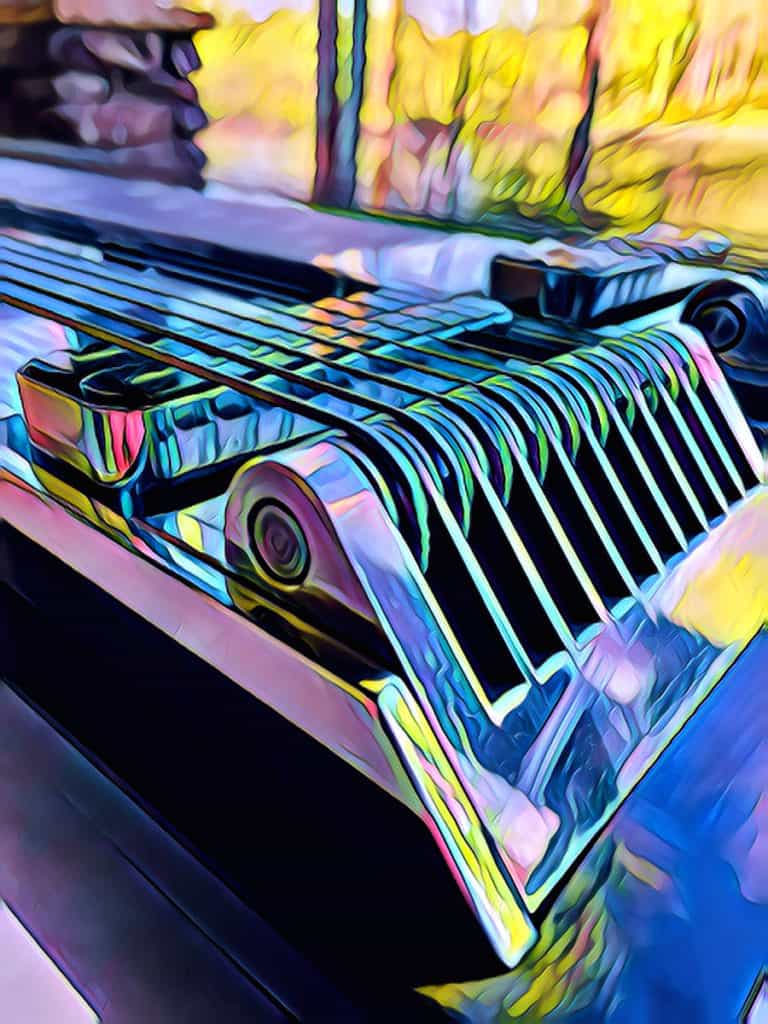
The changer fingers usually have a small peg that the ball end of strings can be hooked onto in order to string up the instrument. It can be a good idea to occasionally lubricate the slots in between the changer fingers (using lubrication that is safe for metal on metal contact without ever gunking up – such as some types of turbine oil).
This allows them to move freely and smoothly whenever they are engaged. Over time, it is possible for the strings to begin “cutting” into the metal of the top of the changer finger.
Nylon Tuning Keys
To tune the stops, or where the pitches finalize when a pedal or lever is engaged, many pedal steel guitars will have nylon tuning nuts that you can tighten or loosen accordingly. These also act as a means to pull part of the changer mechanism.
The nylon tuning nuts are attached to the end of the pull rods, which are located in the undercarriage of the pedal steel guitar. You can use a 3/16 inch hex nut driver to tune these, although many pedal steels come with a tuning key that is this size.
For many pull-release pedal steels, the nylon tuning nuts are used to tune the open strings when there are multiple raises or lowers for a particular string. For all-pull pedal steel guitars, the nylon tuning nuts are usually tuned while that particular pedal or knee lever is fully engaged.
Pedal Steel Legs
Four legs are attachable to each pedal steel guitar, which allows it to sit upright on the floor and be played. Just like most chairs and tables, these legs support the weight of its body.
For pedal steels, these legs are located on the four corners of the pedal steel’s body, and attach on the undercarriage side of the instrument. A player attaches these legs when the pedal steel is upside down (usually in its case) by screwing them in.
The legs are taken off in the case as well, and most pedal steel cases come with a pouch that holds these legs and the pedal steel’s pedal rods. There is usually a separate slot in the case for the legs and pouch to rest.
The Pedal Bar
On the legs of the pedal steel guitar that are furthest away from a player’s body when they play, a pedal bar is attached that has the pedal steel’s pedals attached to it. The pedal bar is attached near the rubber feet of these legs.
Once the pedal bar is attached to the legs of the pedal steel (when they’re already attached too), there are pedal rods that attach to them and the undercarriage of the pedal steel. These are what actually physically pull and release when a player pushes down on the pedals with their feet.
Some pedal bars will feature a brand’s name, logo, or other type of design on the front of them. This can add an aesthetic feature to the area of the pedal bar that faces the audience.
The Foot Pedals
The foot pedals themselves, which are attached to the pedal bar as mentioned above, are what a player actually pushes on with their feet to raise and lower certain strings’ pitches. Most E9 tunings have 3 or 4 pedals, and most C6 tunings utilize 4 pedals.
If a pedal steel is a double-neck, then it usually has 8 foot pedals. If this is the case, the four pedals on the far left from a player’s viewpoint activate the E9 neck. The far right foot pedals activate the C6 neck.
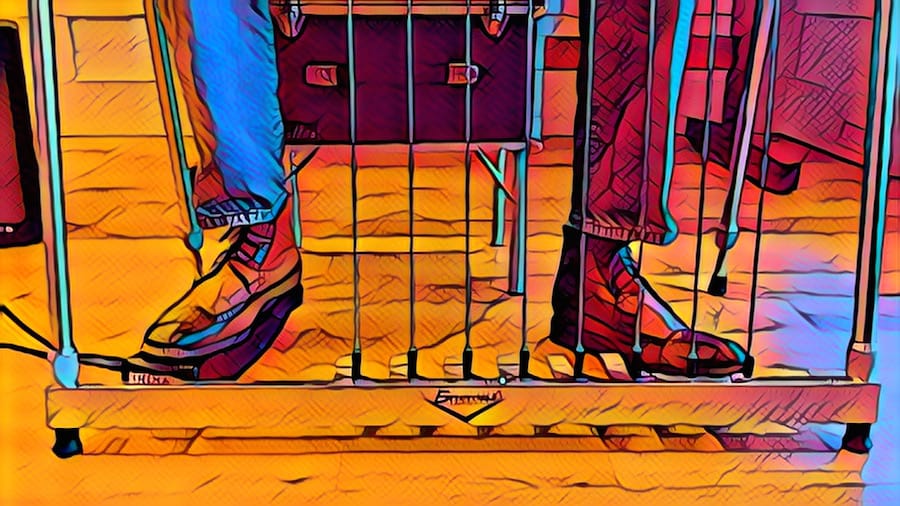
Most foot pedals have ridges built into them for better traction and grip under a player’s foot. When fully depressed, the foot pedal hovers close to the ground but doesn’t actually touch the ground.
Knee Levers
The knee levers mechanically function the same way as the foot pedals, however these levers are designed to be engaged by a player’s knees instead of their feet. The knee levers hang down from the undercarriage of the pedal steel guitar when the instrument is setup.
When a player sits down to play the instrument, they usually put each leg in between two knee levers. Thus, most pedal steels have about 4 knee levers, two for the left knee and two for the right knee.
Knee levers can raise or lower the pitches of strings, just like foot pedals. To do so, a player moves their knee as they’re playing to either the right or left to engage the lever and activate the change.
Pull Rods
The pull rods are an important part of the pedal steel guitar, because they are the actual rods located on the undercarriage of the instrument that attach to the bell cranks, as well as the changer mechanism. When a player engages a foot pedal or knee lever, the cross rod is rotated and the resulting tension makes the pull rod pull on the changer mechanism.
As this occurs the changer mechanism is simultaneously moving the changer finger of certain strings, which physically adds or releases tension on the string to change its pitch. The pull rods themselves are relatively thinner than the cross rods of the pedal steel.
Almost every change on the pedal steel requires a pull rod in order to affect particular strings. To adjust the action of some of the changes, you can reattach the end of the pull rod(s) to different holes in its relative bell crank.
Bell Cranks
One end of the pull rod hooks into its bell crank, which is a rectangular shaped piece of metal that has holes in it. The bell cranks are attached to a cross shaft, which rotates from the tension or release created by the pedal rods or the knee levers.
Most bell cranks have multiple holes for a pull rod to hook into, and adjusting which hole the pull rod is attached to will affect the travel of that change. Oftentimes, when a pedal steel is getting a setup to play properly, a professional will have to make adjustments to the bell crank positions of some of the pull rods.
Furthermore, if you change the gauge of your string on your pedal steel, it is possible that you will have to adjust the bell crank position of the pull rod for that string to get the change to tune and play properly.
Pedal Rods
The pedal rods are what attach the foot pedals to the undercarriage of the pedal steel. Most of the pedal steel’s cross rods have a hole that the pedal rod can attach to.
When a player pushes down on the foot pedal, that foot pedal’s pedal rod pulls the cross rod and makes it rotate. As this happens the bell cranks and pull rods on that cross rod are moved, which engages the changer mechanism of those strings to change their pitch.
The pedal rods are visible to viewers and listeners of the instrument when it is setup. They extend almost to the ground, where they then attach to the foot pedals. The foot pedals themselves are attached to the pedal bar.
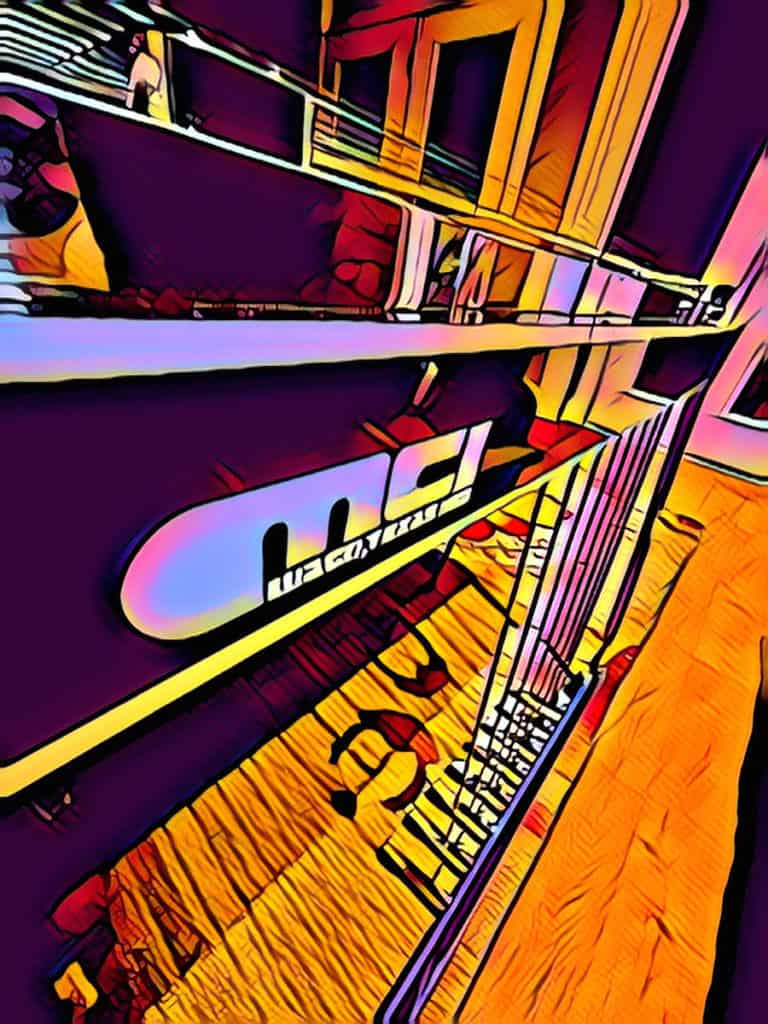
Cross Rods
The pedal steel’s cross rods are located on the undercarriage of the instrument, and usually have bell cranks positioned on them. The cross rods play a pivotal part in the changes of strings’ pitches when foot pedals and knee levers are activated.
They extend perpendicularly to each side of the pedal steel’s body, in comparison to the pull rods. The cross rods are usually rotated or engaged directly by the pedal rods or knee levers as a player plays.
There are usually several cross rods on a double neck pedal steel, and at least one for each foot pedal. Moving bell crank positions along the cross rod is usually an important part of changing a copedent of a pedal steel guitar.
Where to Find Pedal Steel Parts and Hardware
Finding parts or hardware for pedal steel can be challenging because of how niche the instrument is. Also, if you’re looking for specific parts from certain brands/models of pedal steels that are no longer being built, then you may have to search a little harder.
Check out PSG Parts, which is one of the only online retailers of pedal steel parts and hardware. If you’re having trouble locating a specific part or any hardware you may need, then likely your best option is to search (or post a topic) on the Steel Guitar Forum.
Also, check out the Steel Guitar Forum’s classified section, where players routinely sell some of their excess pedal steel parts and hardware. You may also find it resourceful to reach out to current pedal steel manufacturers, brands, and/or builders, who may have extra parts and hardware in their inventory. If they don’t, then they may at least have some suggestions as to where locate specific parts.
Conclusion
The pedal steel guitar is a unique instrument, not only because of its sound, but also because of the way it works. The parts and hardware involved with pedal steel can feel cumbersome, but if you break the instrument down into its individual parts it becomes easier to understand how it functions.
Taking a closer look at each part of the pedal steel, and how they all relate together, can be a great way to learn more about the instrument. If you gain more insight into how a pedal steel’s parts function together, then you’ll likely be more able to diagnose mechanical issues as they arise for your instrument.
Thanks for checking out this page, hope it is helpful and makes playing more enjoyable! If you’re interested in diving deeper into playing E9 pedal steel, check out these resources and guides…
The Chord Guide for E9 Pedal Steel (E-Book, Digital Download)
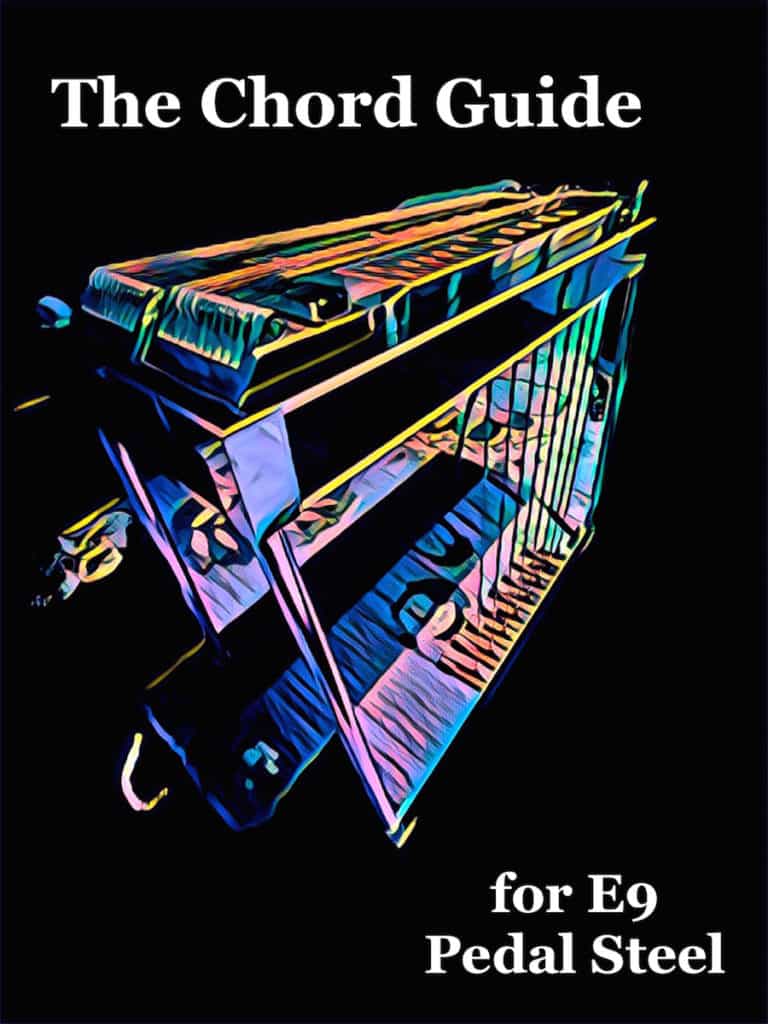
Learn the chords on the E9 neck in a way that makes playing simple and enjoyable…
- Almost Every Chord You’ll Ever Need for E9
- Intuitive and Easy to Use
- Make Use of Pedal and Lever Combinations
- Example Tabs of Chord Movements
- Easily Utilize the Nashville Number System
- Great For Any Key and Style of Music
Includes a bonus section of over a hundred pages of extra chord charts, key references, and more!
You may also like…
200 Country Riffs & Licks for E9 Pedal Steel
Add these country licks to your playing repertoire…
- Easy to Read Format
- Includes Rhythmic Notation
- Playing Over Chord Changes
- Great for Country, Alt-Country, & Honky-Tonk Styles
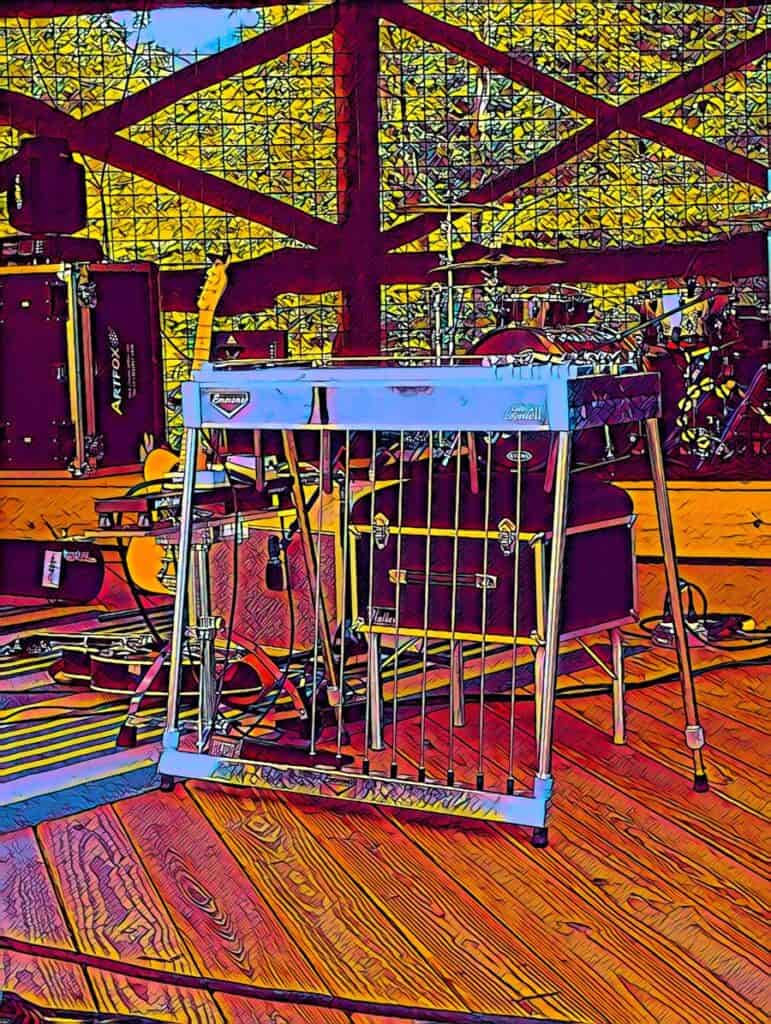
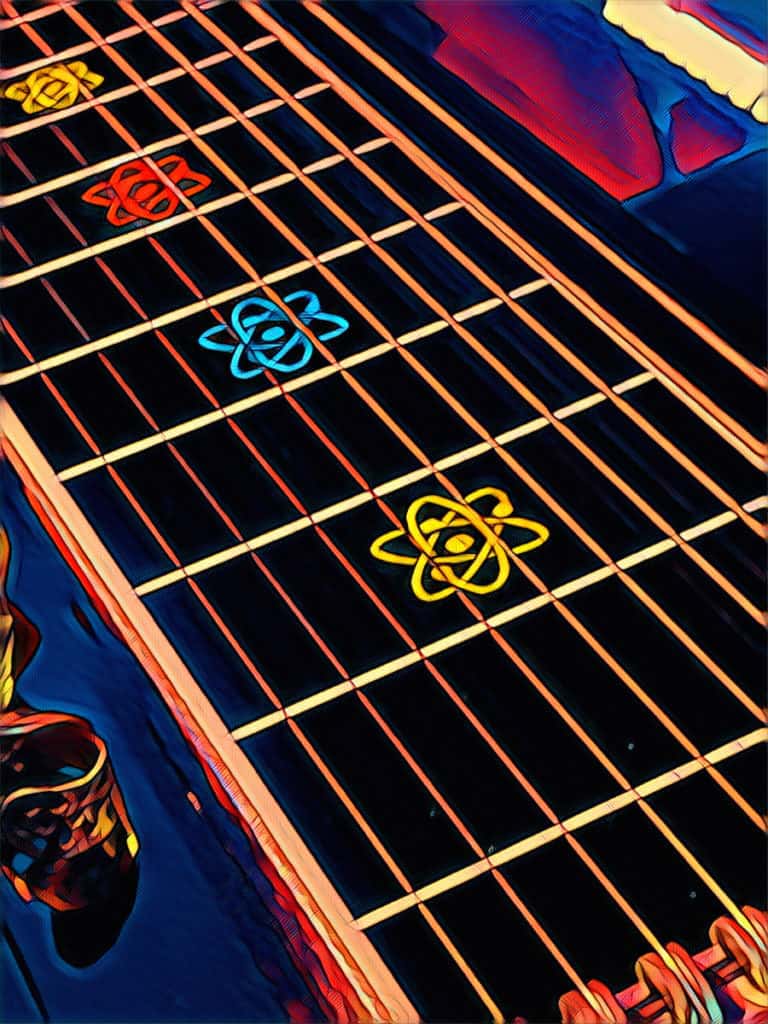
The Scale Book for E9 Pedal Steel
Over 1,000 Pages with Tabs and Diagrams!
- Easy to Use Reference for Practicing
- All Major and Minor Pentatonic Scales, Modes, Major Scales
- All Keys, and Covers the Fretboard
- Includes Pockets of Scales
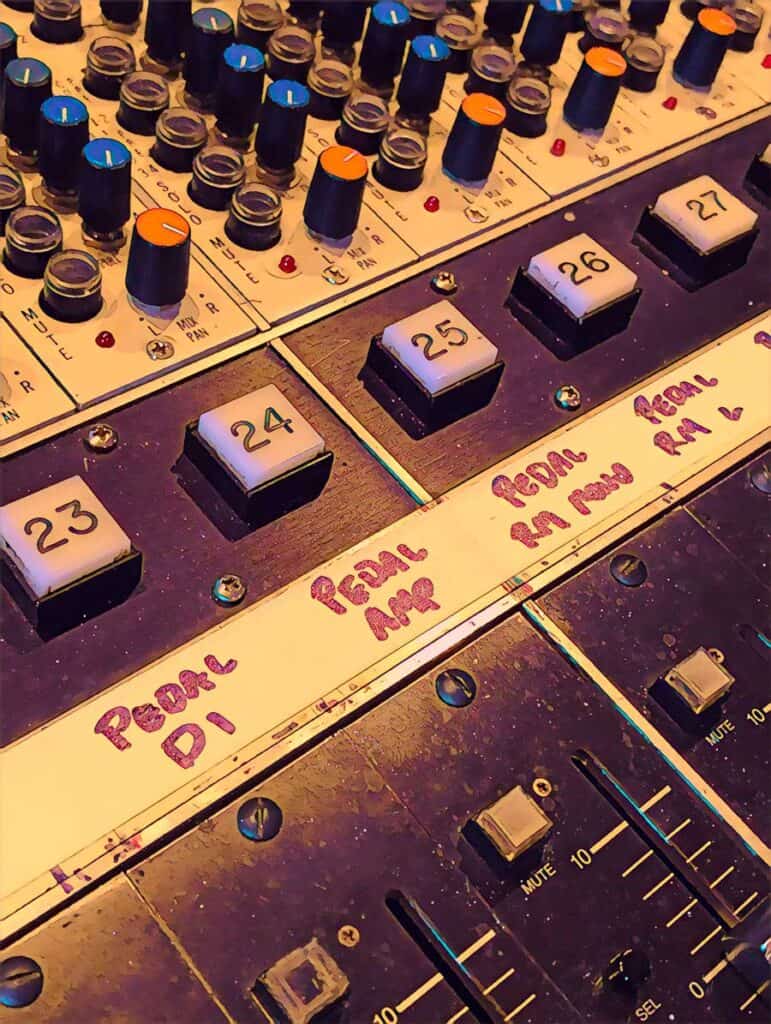
Harmonized 6ths
- Hundreds of Riffs, Licks, and More
- How To Play Sixth Intervals on the E9 Neck – Over Any Chord
- Utilizes The Pedals and Knee Levers

Right Hand Picking & Blocking
- An In-Depth Guide to Picking and Blocking
- Perfect Your Technique
- Includes Graphics, Illustrations, & Practice Exercises
